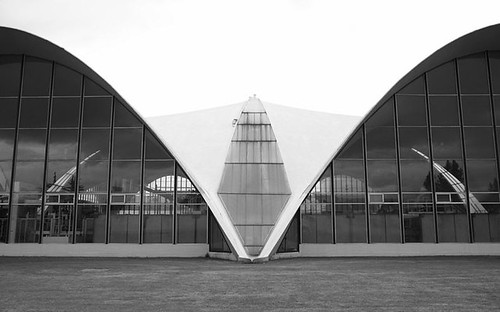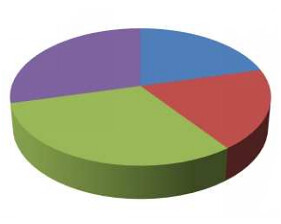The SEI Sustainability Committee is recognized in Athena Institute’s recent press release for our contribution to improvements made to their latest version of the Impact Estimator® (Version 4.2.01, released Sept 2012). The LCA working group of the committee issued a wish list to Athena in late 2011 and worked through the year to fulfill one of the top wish list items: the addition of composite floors (concrete-filled metal deck over steel beams) to the floor and roof assembly options. This effort took a bridging of Athena with AISC and ensuring the translation of data from AISC into the tool met the needs of structural engineering users. The LCA WG will continue to push for implementation of other wish list items in the next release.”
 Sustainability Guidelines
Sustainability Guidelines Thermal Bridging Solutions in MSC
Thermal Bridging Solutions in MSC Carbon Working Group White Paper
Carbon Working Group White Paper Top 10 FAQs Answered
Top 10 FAQs Answered

Sustainability Guidelines for the Structural Engineer
Learn strategies for integrating sustainability into structural design. More

Thermal Bridging Solutions in MSC
April 2012 Issue of MSC: "Thermal Bridging Solutions: Minimizing Structural Steel's Impact on Building Envelope Energy Transfer." More

Carbon Working Group White Paper
Structures and Carbon: How Materials Affect the Climate. More info.

Top 10 Structural Sustainability FAQs
The LCA working group provides answers to 10 FAQs asked by conscientious structural engineers, more
Saturday, September 29, 2012
Life Cycle Assessment Software Now Free Download
Categories :
AISC . Athena Impact Estimator . LCA . Links
The Athena Impact Estimator® (IE) is the most widely used North American life-cycle assessment tool made for designers that allows one to choose the structural system and specification. In order to significantly increase the user base of the IE within the
architectural/engineering design community, the software is now offered free of charge. Visit http://calculatelca.com/software/impact-estimator/ for more information and to download.
The SEI Sustainability Committee is recognized in Athena Institute’s recent press release for our contribution to improvements made to their latest version of the Impact Estimator® (Version 4.2.01, released Sept 2012). The LCA working group of the committee issued a wish list to Athena in late 2011 and worked through the year to fulfill one of the top wish list items: the addition of composite floors (concrete-filled metal deck over steel beams) to the floor and roof assembly options. This effort took a bridging of Athena with AISC and ensuring the translation of data from AISC into the tool met the needs of structural engineering users. The LCA WG will continue to push for implementation of other wish list items in the next release.”
Read more...
The SEI Sustainability Committee is recognized in Athena Institute’s recent press release for our contribution to improvements made to their latest version of the Impact Estimator® (Version 4.2.01, released Sept 2012). The LCA working group of the committee issued a wish list to Athena in late 2011 and worked through the year to fulfill one of the top wish list items: the addition of composite floors (concrete-filled metal deck over steel beams) to the floor and roof assembly options. This effort took a bridging of Athena with AISC and ensuring the translation of data from AISC into the tool met the needs of structural engineering users. The LCA WG will continue to push for implementation of other wish list items in the next release.”
Friday, September 21, 2012
Structure and Carbon: How Materials Affect the Climate
Categories :
Carbon . LCA . Working Groups
The
following is excerpted from the Carbon Working Group's upcoming white paper:
The
embodied impacts associated with building materials (including structural
materials and other finishes and equipment) comprise a relatively small part of
the total environmental impact over the life cycle of a structure, with impacts
from heating and cooling typically far outweighing the materials impacts. In
North America, the relative life-cycle carbon emissions due to building
structural materials alone can range from 1 to 16 percent for a 50-year
building life, depending upon the building type, energy efficiency, and
location.
However, a
study of demolition records found that over 60% of the demolished concrete
buildings were less than 50 years old, and roughly 10% were less than 25 years
old. The numbers were even more striking for the steel-framed buildings: more
than 80% of these buildings were less than 50 years old when demolished, and
40% less than 25 years old. For these short-lived buildings, the embodied
impacts of the structural system could easily exceed 1/3 of the total
life-cycle building impacts for buildings that are highly energy efficient.
The
green building movement has primarily focused on improving operating
efficiencies to reduce carbon emissions, and building energy efficiency is
likely to improve. As a result, the relative embodied impacts of building
materials will likely grow. To decrease our risk of exposure to disastrous
climate-related events, we must not only reduce emissions from building
operations but also reduce embodied emissions in building materials including
structural materials.
The
success of this task depends in large part upon structural engineers who
understand the emissions associated with the materials they use and who can use
data, design, and material research to reduce the carbon emissions associated
with their projects.
So
structural engineers are faced with both a challenge and an opportunity.
Use this site to learn about structural design's contribution to climate
change, and become part of the movement for solutions.
Tuesday, September 18, 2012
How to Reuse a Floating Bridge
Categories :
Competitions . Links . Reuse
 |
| Seattle's 520 Floating Bridge |
Results of the competition are to be announced live at the 2012 Seattle Design Festival and subsequently posted online. Log on to view the winning design. Did you have a better idea? What other design options come to mind? Please share your comments here.
Tuesday, September 11, 2012
Coal Waste Processors Sue EPA
Categories :
CCMs . environmenta . Links . SCMs . United States Environmental Protection Agency
Coal waste products, like flyash, have long been used as complimentary cementitious materials to improve strength and durability of concrete while reducing cement content and therefore the embodied carbon of concrete. Until recently, even the EPA has been supportive of the commercial use of such materials. Now the EPA is taking a second look at the heavy metal content in these byproducts. A final ruling on whether to classify these materials as hazardous waste remains in limbo, but the uncertainty has angered the largest coal waste producers who have filed suit against the EPA demanding a deadline for the ruling.
Jim Vallette of the Healthy Building Network has published an interesting article outlining the positions of each side on this case. Online at https://app.e2ma.net/app/view:CampaignPublic/id:1405374.11099227719/rid:e87b8c542d06d8efb7270d2f375cc924
This issue was addressed in a previous blog article on this website: House Bill Takes on EPA Ruling Process
Read more...
Jim Vallette of the Healthy Building Network has published an interesting article outlining the positions of each side on this case. Online at https://app.e2ma.net/app/view:CampaignPublic/id:1405374.11099227719/rid:e87b8c542d06d8efb7270d2f375cc924
This issue was addressed in a previous blog article on this website: House Bill Takes on EPA Ruling Process
Friday, September 7, 2012
Thermal Bridging in Concrete
Categories :
The thermal bridging group is
progressing on their next publication through ASCE. One new point of focus in
this publication is thermal bridging through other materials. One common
building material that is often overlooked as a thermal bridge is concrete.
Although concrete isn’t nearly as conductive as steel, where it acts as a
bridge it can still cause substantial energy loss. One of the most common
examples of this is at balconies. Often the balcony is merely a cantilever of
the main floor slab. Because of this, there is no continuous envelope or
insulation barrier. In high rise condos and apartments, these can almost be
visualized as fins on a radiator, as they behave in much the same way.
One way
to avoid or reduce this bridge is with a proprietary break. These systems are
designed to still transfer the cantilever forces (shear and moment), while
reducing the bridging to isolated stainless steel bars. Although widely used in
Europe, these systems are not commonly found in the states. The Thermal Bridging
group will be looking at these cantilever concrete conditions more closely in
the next publication.
Thermal Bridging Working Group update by web liaison Raquel Ranieri, P.E., LEED AP BD+C. Read more recent articles about thermal bridging here.
Tuesday, September 4, 2012
The Value of Structural Engineering to Sustainable Construction
Categories :
Green Codes . Institution of Structural Engineers . Links . recycled content
Numerous rating schemes have been proposed to incentivize green design, but how well do these codes relate to the building structures. The Institution of Structural Engineers set out to identify which green codes, if any, successfully addressed structures. Their report, titled The Value of Structural Engineering to Sustainable Construction, takes a methodical look at provisions in eight main categories common to most of the rating systems:
- Reuse
- Reduction of Portland cement
- Recycled content
- Responsible sourcing
- Local sourcing
- Life cycle assessment
- Efficiency & future proofing
- Health implications
Download the report at:
http://www.istructe.org/webtest/files/ff/ff7707de-d68f-47f2-b002-b472d90861d8.pdf
Subscribe to:
Posts (Atom)












